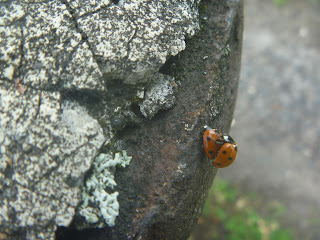We had a lovely walk yesterday along the River Almond, starting at the Cramond Brig and ending up at the village of Cramond. It's a lovely stretch of river
I've always liked the ruin of the old Far a Fair mill There are lots of ferns in among the stones of the walls, including this Maidenhair SpleenwortClose to the mill is a weir, which now has a fish ladder alongside it to allow salmon to travel upriver, you can just about see the fish ladder to the right of the weir in the photo below
Just further downstream is a beautiful meadow of planted wildflowers, which was buzzing with bees and hovercflies when we visited
I particularly love the scabious flowers and their seedheads
It was good to see so many insects, including this Red Tailed Bumblebee, feeding on a thistle
It's definitely a better year for many groups of insects compared to the last few years, though there are nowhere near as many as there would have been back when I was growing up in the 1970s.
Still further along the river, we saw this handsome Grey Heron
and this family of Goosanders We were also very pleased that the Cramond Inn is once again open under new management! A lovely, traditional inn serving good food and drink. It's had problems in the past under previous managers, but everything was great when we were there for lunch.**
I'm happy to have a haiku included in the Creature Feature on Haiku Girl Summer.
































